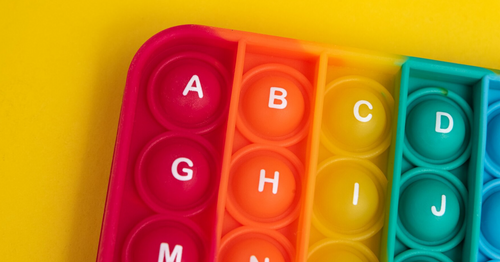Looking for part one in our series on teaching phonics to ESL students? Check it out here.
The foundation of learning English is phonics. The ability to read and write a language is just as crucial as the ability to speak and listen to it. Let's look at some of the greatest phonics games for online classrooms and the best phonics teaching methods for online English tutors.
Phonics Instructional Techniques
Make Use of Visual Aids
Visual aids may be a fantastic method to reinforce learning in any topic, as AllRight teachers are aware. However, the use of visual aids is vitally necessary when teaching reading and writing. Students will be more likely to make connections between the letters and their particular sounds if you use visual aids in your online lessons, such as pictures, manipulative letters, or simply by circling the letters in a word.
Clear Your Vocabulary When Speaking
If you're a new teacher, it could seem difficult to improve your ESL pupils' pronunciation. However, concentrating on your own pronunciation is the most effective approach to help a learner. Make sure what they hear is clear and consistent since students will learn to repeat what they hear!
Additionally, it's critical to be aware of any difficulties that can arise while introducing new sounds when teaching pronunciation. When teaching letters with similar sounds, avoid doing so simultaneously.
For instance, many ESL learners could struggle to tell the difference between the letters "D" and "T" or between sounds from similar consonant clusters like "SH" and "CH."
Introduce potentially perplexing sounds throughout the course of several lessons to ensure that children can learn each sound separately.
Utilize TPR

Total physical response (TPR) is a teaching strategy that incorporates both verbal instruction and physical movement to give students an interesting educational experience. AllRight teacher's know that acting out and emphasizing the sounds that letters make is a useful method when teaching phonics in an online classroom.
A sigh of breath for the letter "P," a writhing snake for the letter "S," or zipping up a garment for the letter "Z" are a few examples.
Play sounds again (again, again, and again)
According to research, people need to hear and repeat new information about 30 times before they can properly retain it. However, avoid simply standing in front of your children and repeating the same letter sound until you pass out. When introducing a new sound, say it aloud using your visual aid and have the class repeat it back to you 5-7 times before moving on. To keep the lesson interesting and the kids interested, incorporate some TPR, and have them continue practicing through games and activities in the classroom.
Phonics Games
Online classroom games are a fantastic tool to introduce themes and reinforce prior knowledge while teaching phonics. The top phonics games to play with ESL students are listed below.
Games for Segmentation and Blending
When blending, you ask your students to combine (or "blend") letters to create words.
- Give younger pupils 6–8 letters and ask them to make as many three-letter CVC words as they can to play blending games.
- Give older children a variety of random letters, and then have them construct the longest word they can.
- There are numerous options for developing blending games and activities as long as kids are fusing letters and sounds together!
Here are some additional examples:
| Blending | Example |
Initial Blending: Ask students to blend the initial consonant sound with a vowel sound. |
|
Final Blending: Have students blend a consonant sound with a final consonant sound. |
|
Consonant Cluster Blending: Practice blending consonant clusters (two or more consonant sounds) with a vowel sound. |
|
Syllable Blending: Teach students to blend syllables together. |
|
Sentence Blending: Create short sentences where students practice blending words together in a natural context. |
|
Tongue Twisters: Use tongue twisters to challenge students' blending skills and improve their pronunciation. |
|
Segmentation involves separating a word into its separate letters and sounds and is in many ways the reverse of blending.
Spell out a word in front of the class with younger pupils (in this case, let's use "alligator"). See if the children can determine which letter produces each of the distinct sounds that make up the word. You can make the words more difficult the more advanced the kids are. With your students, try it out!
Build-a-Word

Compared to our other phonics games, Build-a-Word requires more listening and writing than reading. Give each kid a letter that has been cut out before class begins.
To start, say the word "dog" aloud to your students. Students will arrange the letters "D", "O", and "G" together to form the word with the letters in front of them. With older children, make words more challenging or divide the class into teams and have the teams compete to see which team can come up with words the fastest.
Play Flash Cards

A tried-and-true technique for helping students practice their phonics is using flash cards. Furthermore, making your own is simple! To increase pupil retention, have them practice letter combinations and sounds with flash cards. Set a timer to see how many they can complete in one minute, or time them to see how quickly they can complete the entire set to make it into a game!
Ask more experienced kids to list as many words as they can that begin with the sound you are rehearsing by showing them the sound on a flash card. To make it a game and keep kids interested, start a timer or keep track of your class records!









